Shanghai
The pearl of the orient
Paris of China and queen of the orient; city of quick riches and ill
gotten gains, the doamin of adventurers gamblers drug runners missionaries
and gansters -- This is the vivid discription of Shanhai in
the 19th century. However, Shanghai has hidden away its dancing shoes
asince the communist took over in 1949 and the whole mass began to adapt
to a different life -- it become the city of factory, of
lennism and marxism and of blue and grey.
But once again, shanghai has reawakened -- it is
re-establishing its reputation of being the center of Trade,
Business, Culture and Art in the new millenium. The sun rises everyday to
a city full of newly constructed department stores, skyscrapers and high
ways. It is a true union of Asian and Western Culture,
ancient and modern value , and trading and culture.
Information About Shanghai
History :
Shanghai was a little town before the 1800s. However, as a
gateway to the yangzi river, it was an ideal trading port for the
Westerners. British opened the first concession in this city after China
lost the first opinion war in 1840s. French Italian Spanish American
and Japanese followed the footsteps of the British and by the end of
1920s, there wre more than 60,000 foreign residents living in Shanghai.
The city was built on the trade of opium silk and tea the time and
it was the busiest port in the whole Asia. However, behind the
glamour of Shanghai, behind the beautiful scenes along the bund was
the picture of dispair, of poverty and hunger. Exploited in workhouse
conditions, crippled by poverty, sold into slavery or brothels,
the poor of Shanghai had radical opinions and wanted change. Disgusted by
the what had been to the majority of Shanghainese, the educated ones
also wanted a revolution. In 1921, the communist party was found in
a quite house in the French concession with 12 people presented at
the first meeting.
Communist took over shanghai in May 1949. They eradicated brothels,
rehabilitated the opion addicts and elimiated child and slave labour.
However at the same time, shanghai was transformed from a city full of
energy and glamour to a city of mist.

Bund , taken in 1930s

Bund -- taken in 1930s
Climate
The best time to visit Shanghai is in Autum
(September to November) and Spring ( April to June). Shanghai's winter can
be unbearable to some, with temperature vary from -5 degree to
+5 degree while summers are hot and humid, reaching 40 degree
occasionally.
Language:
Most of the Shanghainese speak Mandarin which is the official language of
People's Republic of China. Apart from that, people speaks a local
dialect called Shanghainese which is very different from Mandarin. The
written langauge is simplified Chinese.

Shanghai Sky Line
Politics:
Shanghai has always been the centre of
politics. It had been the site where both the Nationalist party and the
Communist party struggled to take over during the civil war
and where the Gang of Four based their power at during the culture
revolution. A lot of the prominent Chinese leaders are Shanghainese
or have been the mayor of Shanghai. For example, the current
President Jiang Zeiming and the ministers Zhu Roingji and Wu Bangguo both
lived in Shanghai for more than 50 year and Hong Kong's new chief Dong
Jianhua was born in Shanghai.
Economy:
Shanghai is the major financial centre
and an economic powerhouse in China. The government plans to use Shanghai
to replace Hongkong as China's economical frontier in the
future. The average salary at the moment is approximately 1200
American dollars per year while a lot of the uni graduates in their 20th
earn up to 4000 American dollars per year. The difference between
the riches and the poors are clear here, BMW, Benze Mercedes and
Royce rolls can been seen on the street while beggers and thiefs are
everywhere as well. Shanghai is facing a lot of problems with booms
in the 1990s slows down grdually and the city becomes a bit "too
expensive" for the foreigners to invest in.

Important sites in Shanghai

Nanjing road, the "number one
street" of China, has always been the main attraction and shopping
area in Shanghai. It is the busiest street in the city and probably
the whole world -- it can be so crowded that you have to push your
way through it during its peak hours.
Nanjing Road has been the center of Shanghai since the begining of 1900.
At the moment, shops open between 10 am and 10 pm, seven days a
week, 356 days a year.
Nanjing Road At night
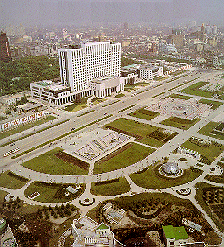
People's Square was the site of Shanghai
Racecourse before the communist took over and now it proudly displays the
museum of Shanghai.
Shanghai museum was built in 1994 and is the symbolic of many changes in
China. Its shape resembles an ancient Chinese Ding vessel and is the
home of impressive collection of art in China.

Shanghai TV Tower, also called Pearl of the East
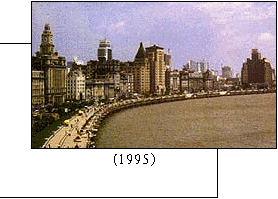

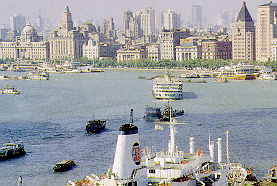
These are the pictures of the famous The
Bund.
The Bund is an Anglo-Indian term for the embankment of muddy waterfront.
And it is the symbolic of Shanghai like the Opera house in Sydney.
It is a boulevard of 1.5 km located on the West Bank of Huang Pu Jiang,
the exit of the second longest river in China -- Yangzi river.
Pictures of The Bund
The Bund was the political and trading center of Shanghai and the wole China in early 1900s. A lot of the Europeans know it as the Wall Street of China back then. When you walk along the bond, you can come across the old sites of some big international companies such as City Bank, Jardin Matheson& Company, Hongkong and Shanghai Bank as well as a few old Europen clubs. Jarcin and Matheson & Company was set up in 1848 and it now grew into one of the great business firm and owns just about half of Hongkong. Due to the above reason, different types of buildings were constructed along the Bund and it is known as the miniature of "museum of international artchitecture".

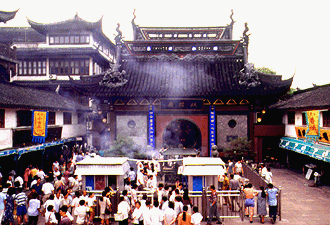
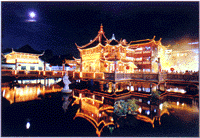
Cheng Huang Temple and Yuyuan Gardens
Cheng Huang Tmple and Yuyan Garden
are located in the north east side of the old Chinese town and are
adjacent to each other.
Yuyuan garden can be backdated to four hundred years ago when the
Pan family, rich Ming dynasty officials, built it. It took 18 years
to complete. It was took over by the Taiping rebels during 1840s and added
more historical significance to the site.
Cheng Huang Temple means the Temple of the Town gods. It was destroyed in the Culture revolution, and what remains was the reconstruction of the old architectur., However, the Shanghainese food here are famous across China and a lot of shops were built selling Chinese art piece and different types of souvenirs
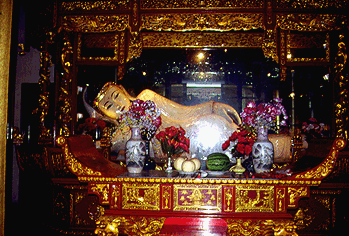
Jade Buddha Temple was built in 1911. It is
one of the few remaining buddhist temples in Shanghai.
The centre piece of the temple is the 2m high white jade buddha which is
said to weight 1000kg. There is also a smaller reclining buddha close by.
Jade Buddha Temple (Yu Fuo Si)
Architectures of Shanghai
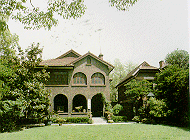
Dr. Sun Yatsen (Sun Zhong-Shan)
was the first president in China. He was named the "father of
the country" in Taiwan and spent his life promoting democracy in
China.
Dr. Sun Yatsen stayed in this place for approximately six years. After his
death, his wife Mrs Song Qin-Lin, who was a sympathizer of the
communist party, continued living here until 1937, constantly being
watched by the Nationalist party plain
cloth police.
Dr. Sun Yatsen's residence
Mrs Song Qin-Lin was the second wife of Dr.
Sun Yatsen and later became the vice chairman of People's Republic of
China herself.
Mrs Song was born in Shanghai in 1893 and was sent to
the United States with her sisters to receive further education. By
1930s, her family had become the most prominent family in China with
her being married to Dr Sun Yatsen, her sister married to president
Jiang Jie-shi and her brother become the minister of the
finance. Even though her brother in law Jiang Jie-shi was the president of
Nationalist party who was in control of China in 1930s and 1940s, Mrs Song
had always been a communist believer. She stayed in Shanghai until her
death in 1980s.
The picture shows her residence after
communist take over in 1949. It is a two storey building with a lovely
garden and high walls surrounding it.
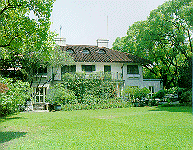
Mrs Song Qinling's Residence
P.S. Jiang jieshi is also known as China Kaishek,
Nationalist party is known as Kuomingtang or KMT or Guo Ming Dang.
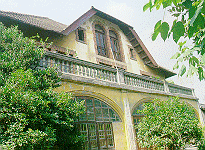
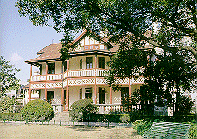
Jiang Jieshi's Residence
Li Hongzhang's residence

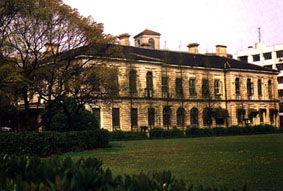
Foreign trade building
(located along The Bund)
Second office building of Shanghai


Shanghai Mansion -- built in 1920s
Great Mansion
Landscape of the French concession in Shanghai
Shanghai, Shanghainese and
its summer.